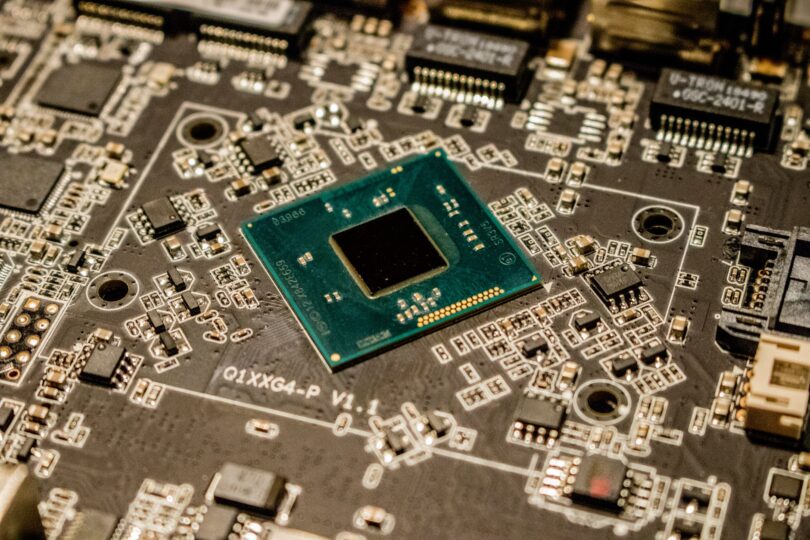Next week, Biden will push for an agreement on the long awaited infrastructure bill. The bill is expected to pass in late 2023 and will start boosting growth next year, said Morgan Stanley.
President Joe Biden faces a steep uphill battle to pass his infrastructure bill. However, Morgan Stanley has boosted its 2023 growth prediction to 3.4% based on the event the bill passes.
| Proposed Budget | Program | Goals |
| $621 Billion | Transportation | Repair roads and bridges ($115 billion). Modernize public transit ($85 billion). Invest in passenger and freight rail service ($80 billion). Build electric vehicles ($175 billion). Improve ports, waterways and airports ($42 billion). Redress historic inequities and advance future infrastructure ($45 billion). Improve infrastructure resilience ($50 billion). |
| $400 Billion | Elderly and Disabled Care | Expand access to affordable homes or community-based care. This includes: Expanding access to long-term care services under Medicaid. Create infrastructure for well-paying caregiving jobs |
| $300 Billion | Manufacturing | Strengthen manufacturing supply chains for critical goods. This includes: Creating a new office at the Department of Commerce to monitor domestic industrial capacity and fund production ($50 billion). Semiconductor manufacturing and research ($50 billion). Invest in countermeasures to protect against future medical pandemics and prevent severe job losses. ($40 billion). Clean energy manufacturing ($46 billion). Invest in regional innovation hubs and a Community Revitalization Fund ($20 billion). Invest in domestic manufacturers ($52 billion). Create national small business incubator and innovation hub network ($31 billion). Partner with rural and Tribal communities to create jobs and support economic growth ($5 billion). |
| $213 Billion | Housing | Produce, preserve and retrofit over two million affordable and sustainable homes. This includes: Tax credits to rehabilitate or build 500,000 low and middle class homes ($20 billion). Improve public housing system infrastructure ($40 billion). Clean energy investment to upgrade homes and businesses ($27 billion). |
| $180 Billion | Tech Research and Development | Upgrade American research infrastructure ($40 billion). Promote collaboration and build on government programs ($50 billion). R&D job creation and innovation ($30 billion). Clean energy technology and clean energy jobs ($35 billion). Climate-focused research and climate R&D projects ($20 billion). R&D investment at HBCUs and other MSIs ($25 billion). |
| $111 Billion | Water | Replace lead pipes and service lines ($45 billion). Upgrade and modernize national drinking water, wastewater and stormwater systems; and tackle new contaminantsand support rural clean water infrastructure nationwide ($66 billion). |
| $100 Billion | Internet | Build high-speed broadband infrastructure to reach 100% coverage nationwide. Promote price transparency and competition among internet providers. Reduce broadband internet cost through widespread service. |
| $100 Billion | Power | Build an electric transmission system that moves cheap, clean electricity nationwide. Modernize power generation to deliver clean electricity. Plug orphan oil and gas wells and clean up abandoned mines ($16 billion). Remediate and redevelop Brownfield and Superfund sites ($5 billion). Public land and water conservation jobs ($10 billion). |
| $100 Billion | Schools | Upgrade and build new public schools ($50 billion direct grants, $50 billion leveraged through bonds). Invest in community college infrastructure ($12 billion). Upgrade and build new child care facilities ($25 billion). |
| $100 Billion | Workplace | Support workers with next generation training programs. This includes: Creating a new Dislocated Workers Program and sector-based training ($40 billion). Target workforce development opportunities in underserved communities ($17 billion). Increase the capacity of existing workforce development and worker protection systems ($48 billion). |
| $28 Billion | VA Hospitals and Federal Buildings | Modernize Veterans Affairs hospitals and clinics ($18 billion). Buy, build or renovate federal buildings ($10 billion). |
4 Semiconductor stocks that could benefit from the infrastructure bill
- Intel (INTC)
- Nvidia (NVDA)
- AMD (AMD)
- ON Semiconductor (ON)
Let’s dive into these stocks.
Intel (INTC)
Price: $55
Intel Corp. engages in the design, manufacture, and sale of computer products and technologies. It delivers computer, networking, data storage, and communications platforms. The firm operates through the following segments: Client Computing Group (CCG), Data Center Group (DCG), Internet of Things Group (IOTG), Non-Volatile Memory Solutions Group (NSG), Programmable Solutions (PSG), and All Other.
The CCG segment consists of platforms designed for notebooks, 2-in-1 systems, desktops, tablets, phones, wireless and wired connectivity products, and mobile communication components. The DCG segment includes workload-optimized platforms and related products designed for enterprise, cloud, and communication infrastructure market.
The IOTG segment offers compute solutions for targeted verticals and embedded applications for the retail, manufacturing, health care, energy, automotive, and government market segments. The NSG segment constitutes of NAND flash memory products primarily used in solid-state drives.
The PSG segment contains programmable semiconductors and related products for a broad range of markets, including communications, data center, industrial, military, and automotive. The All Other segment consists of results from other non-reportable segment and corporate-related charges. The company was founded by Robert Norton Noyce and Gordon Earle Moore on July 18, 1968 and is headquartered in Santa Clara, CA.
Nvidia (NVDA)
Price: $559
NVIDIA Corp. engages in the design and manufacture of computer graphics processors, chipsets, and related multimedia software. It operates through the following segments: Graphics Processing Unit (GPU), Tegra Processor, and All Other.
The GPU segment comprises of product brands, which aims specialized markets including GeForce for gamers; Quadro for designers; Tesla and DGX for AI data scientists and big data researchers; and GRID for cloud-based visual computing users. The Tegra Processor segment integrates an entire computer onto a single chip, and incorporates GPUs and multi-core CPUs to drive supercomputing for autonomous robots, drones, and cars, as well as for consoles and mobile gaming and entertainment devices.
The All Other segment refers to the stock-based compensation expense, corporate infrastructure and support costs, acquisition-related costs, legal settlement costs, and other non-recurring charges. The company was founded by Jen Hsun Huang, Chris A. Malachowsky, and Curtis R. Priem in January 1993 and is headquartered in Santa Clara, CA.
AMD (AMD)
Price: $74
Advanced Micro Devices, Inc. engages in the provision of semiconductor businesses. It operates through the following segments: Computing & Graphics, and Enterprise, Embedded and Semi-Custom. The Computing and Graphics segment includes desktop and notebook processors and chipsets, discrete and integrated graphics processing units, data center and professional GPUs and development services.
The Enterprise, Embedded and Semi-Custom segment includes server and embedded processors, semi-custom System-on-Chip products, development services and technology for game consoles. The company was founded by W. J. Sanders III on May 1, 1969 and is headquartered in Santa Clara, CA.
ON Semiconductor (ON)
Price: $36
ON Semiconductor Corp. engages in the design, manufacture, and marketing of portfolio of semiconductor components. It operates through the following segments: Power Solutions Group, Advanced Solutions Group, and Intelligent Sensing Group. The Power Solutions Group segment offers discrete, module, and semiconductor products that perform multiple application functions, including power switching, power conversion, signal conditioning, circuit protection, signal amplification, and voltage reference functions.
The Advanced Solutions Group segment designs and develops analog, mixed-signal, advanced logic, ASSPs and ASICs, Wi-Fi and power solutions for a broad base of end-users in the automotive, consumer, computing, industrial, communications, medical and aerospace/defense markets.
The Intelligent Sensing Group segment includes designs and develops CMOS and CCD image sensors, as well as proximity sensors, image signal processors, single photon detectors, including SiPM and SPAD arrays, as well as actuator drivers for autofocus and image stabilization for a broad base of end-users in the automotive, industrial, consumer, wireless, medical and aerospace/defense markets. The company was founded on August 4, 1999 and is headquartered in Phoenix, AZ.





